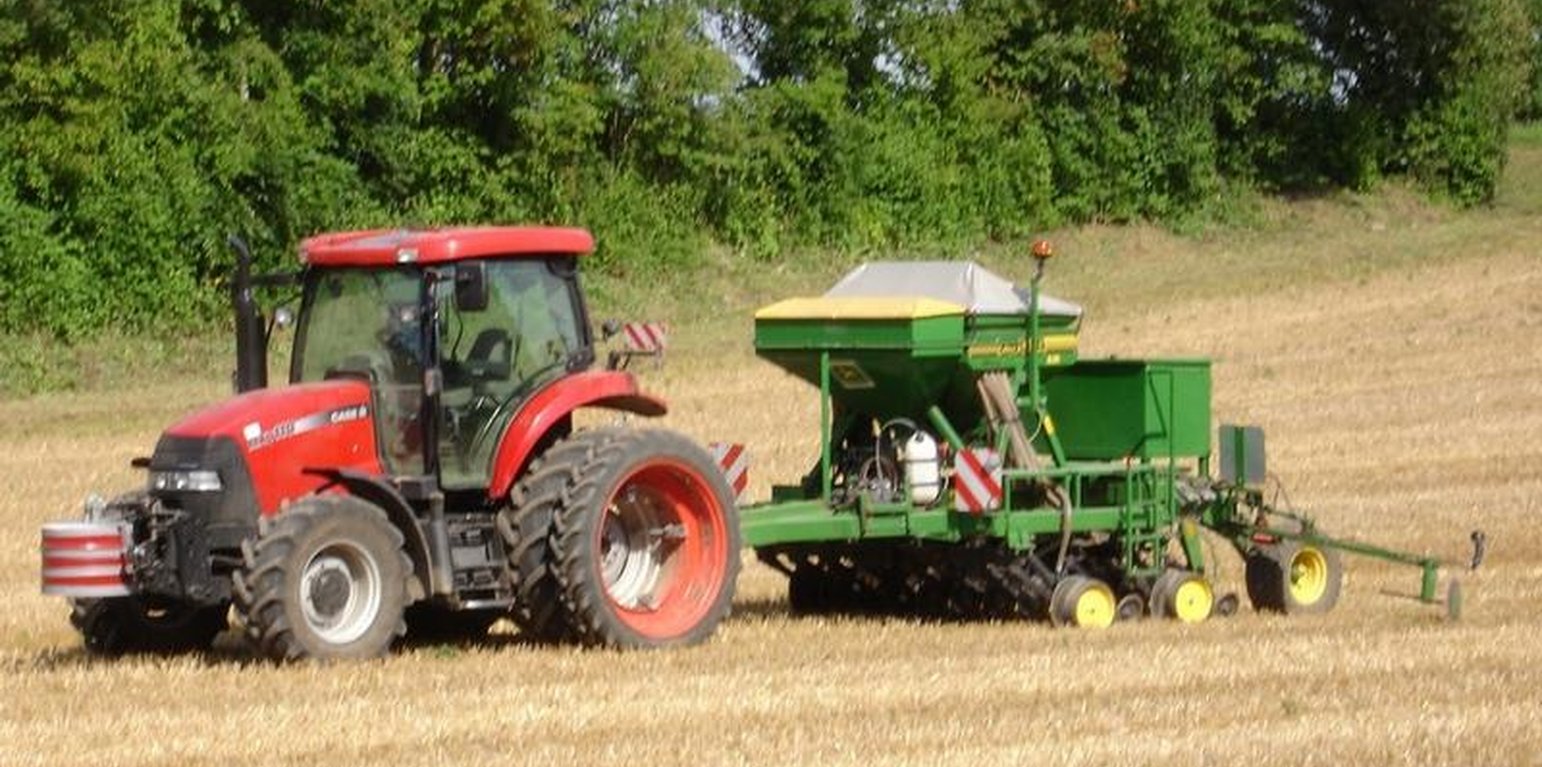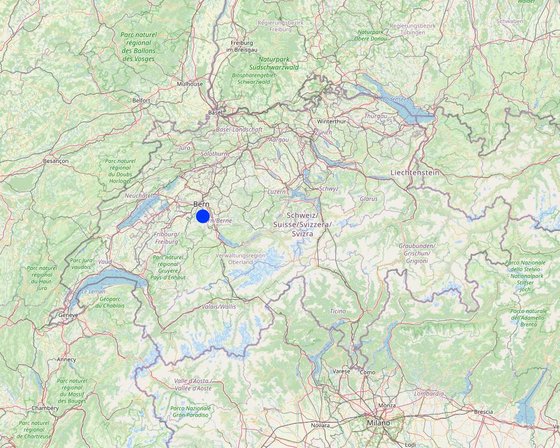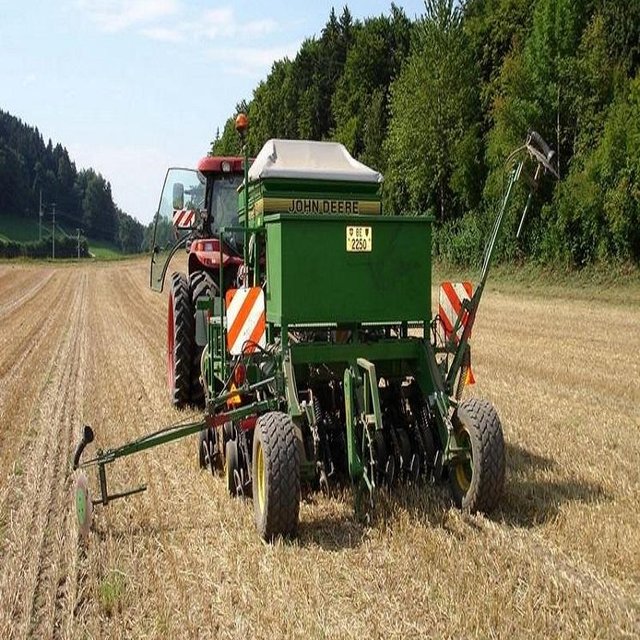



The farm portaited is located in a hilly area near Bern. It is cooperating with an other farm of the village so that in total 32 ha of arable land are cultivated. All crops except for potatoes and sugar beets are produced within the no-tillage system. So the area cultivated with the no-tillage system is about 26 ha. The farm is producing mainly fodder (maize, wheat) for pigs. Beside this potatoes and sugar beets are produced to be sold. A typical crop rotation consists of a root crop, followed by a winter grain and a green manure. There are major meadows, too.
No-tillage characterizes a cultivation system without ploughing or any other reworking of the soil. After the previous crop (Maize, grain) has been harvested, a total herbicide is applied and the seeds are brought directly into the soil with a special machine. A metal disk carves a narrow slit into the surface. Then the seeds are brought into the soil pneumatically. Finally, the slit is closed again by two wheels pressing on the surface.
The no-tillage system is used to reduce soil degradation, especially erosion. It enables a permanent cover of the soil surface, which reduces sealing and crusting. Since they are not disturbed by ploughing anymore, there are more earthworms in the soil. Their activity can slowly reduce compaction and improve the soil structure. This leads to better infiltration rates and also to a higher water storage capacity. Less water remains on the soil surface, so soil loss can be reduced.
The no-tillage system requires a special direct seeding machine. This machine is very expensive, so most farmers don’t buy it on their own but task a contractor with the seeding. On the other hand, certain machines from conventional agriculture are not needed anymore (plough, harrow, rotary tiller etc.). Furthermore, working hours and fuel can be saved. In some cantons of switzerland no-tillage agriculture is also subsidised. For this reason, the method holds economic advantages, too.
In the beginning crop yield may be reduced by up to 10%. The rebuilding of the soil structure requires a certain time, depending on the state of the soil at the time of transition. However, this was not the case for the farm portaited here: Already in the first year there were very good crop yields, although the probability for crop loss is higher in the no-tillage system. Competition between the crops and weeds can be too strong if the total herbicide is applied under wet conditions. In addition drying of the soil in spring is often delayed. Thus the plants may face too wet conditions.

地点: Kanton Bern, Gemeinde Wald, 瑞士
分析的技术场所数量:
技术传播:
在永久保护区?:
实施日期: 10-50年前
介绍类型




| 对投入进行具体说明 | 单位 | 数量 | 单位成本 (Swiss Franc) | 每项投入的总成本 (Swiss Franc) | 土地使用者承担的成本% |
| 设备 | |||||
| Direct seeding machine | Machine | 1.0 | 278000.0 | 278000.0 | 100.0 |
| 技术建立所需总成本 | 278'000.0 | ||||
| 技术建立总成本,美元 | 257'407.41 | ||||
| 对投入进行具体说明 | 单位 | 数量 | 单位成本 (Swiss Franc) | 每项投入的总成本 (Swiss Franc) | 土地使用者承担的成本% |
| 劳动力 | |||||
| Seeding | ha | 1.0 | 185.0 | 185.0 | 100.0 |
| Spreading of snail poison | ha | 1.0 | 46.0 | 46.0 | 100.0 |
| 肥料和杀菌剂 | |||||
| Biocides | ha | 1.0 | 56.0 | 56.0 | 100.0 |
| 其它 | |||||
| Appliance of herbicide | ha | 1.0 | 93.0 | 93.0 | 100.0 |
| 技术维护所需总成本 | 380.0 | ||||
| 技术维护总成本,美元 | 351.85 | ||||
not in general, but can occur in the beginning
reduced risk for production failure due to erosion but the technology is sensitive to wet conditions in spring. Risk of crop failure due to snails is enhanced
no reworking of the soil but major initial investment if no direct seeding machine is available for rent.
due to reduced expenses
no reworking of the soil
ploughing is a major part of rural identity. Farmer become more dependent on others if work is outsourced to contractors.
better soil cover leads to higher tolerance against intense rain. Increased soil moisture leads to higher tolerance against droughts
erosion is almost negligible